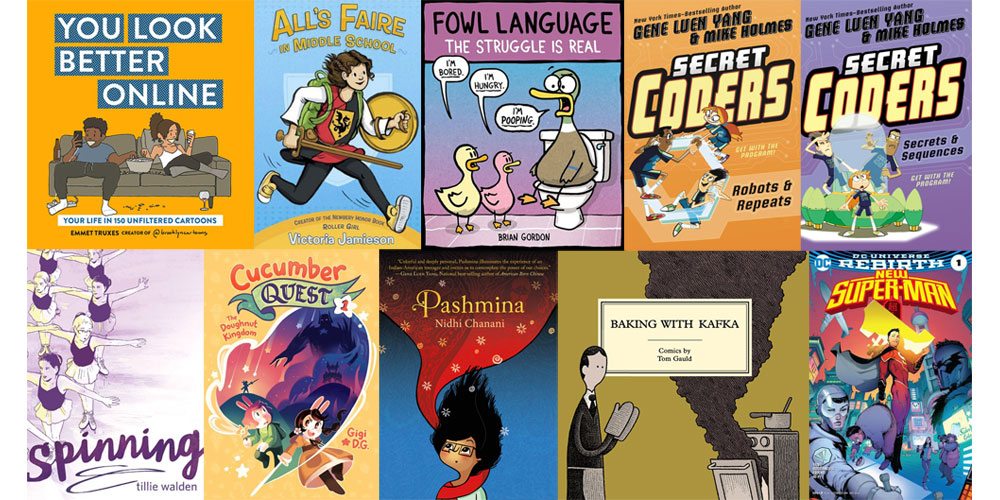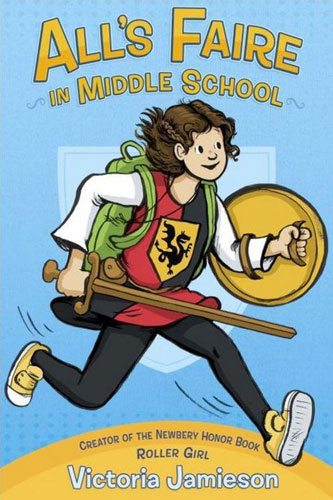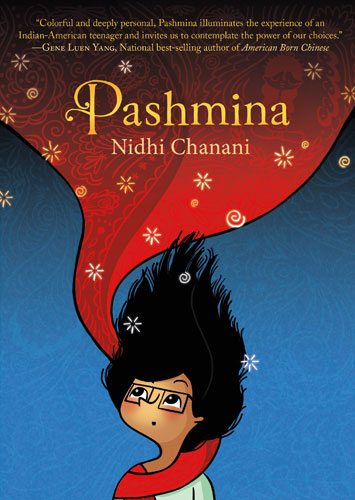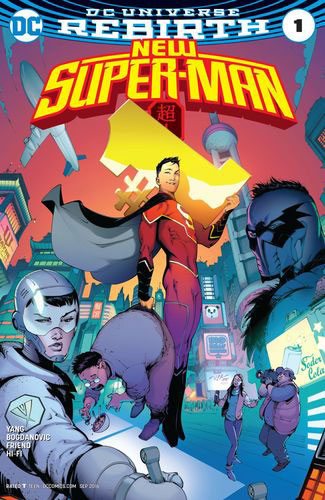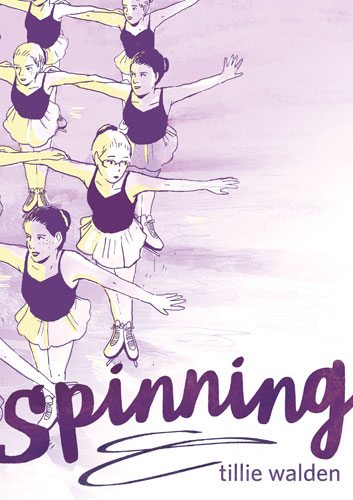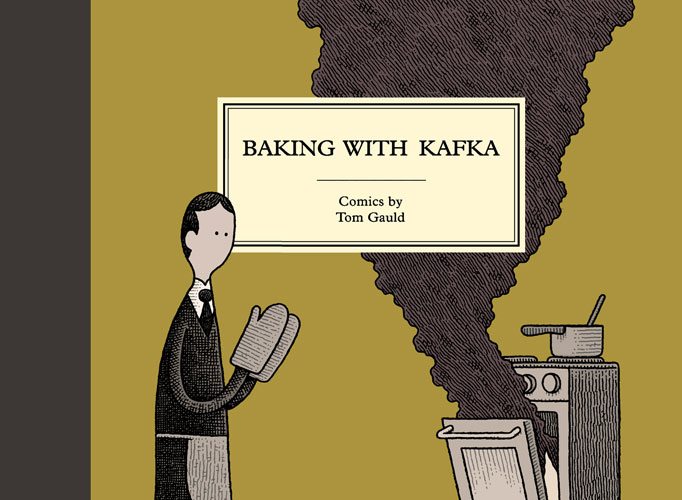Hey, there, reader! I feel like I’ve been gone for a while—we’ve had several different people curating Stack Overflow in the past two months, so it’s been fun to see what books other people pick, but it means that my stacks are, well, even more overflowing. Today I want to share some comic books, and I’ve got some titles for kids, young adults, and adults.
Let’s start with the kids’ books!
Cucumber Quest 1: The Doughnut Kingdom by Gigi D.G.
Cucumber Quest is a story about bunny kids going on adventures—specifically, Cucumber and his little sister Almond. Dreamside needs a legendary hero to take on the newly revived Nightmare Knight, and Cucumber isn’t really sure he’s interested in being that hero. Almond, however, is ready for anything, and relishes any opportunity to brandish her sword.
This book is filled with a lot of silliness and humor and really plays around with traditional “chosen one” tropes. The Dream Oracle, who is supposed to be responsible for giving the Dream Sword to the legendary hero, can’t be bothered to distinguish one bunny from another. Almond actually helps the bad guys revive the Nightmare Knight so that she’ll have somebody interesting to battle.
Mixed in with the humor is a witty take-down of gender stereotypes, along with some really lovely artwork. The illustrations aren’t your usual line-drawings-with-color, but are all color, making each frame look like an illustration from a picture book. In a scene where a character relates an old story, it switches to a cut-paper style, which is also really fascinating.
Cucumber Quest actually started as a webcomic, so you can read it online here (going even beyond what’s in the first volume), but First Second did a wonderful job making the physical book beautiful to look at, too. Fortunately, if you like the paper books, you won’t have to wait too long: Volume 2, The Ripple Kingdom, will be available in February, and Volume 3, The Melody Kingdom, is expected in May. (I’ve only read the first volume myself so far, but am looking forward to continuing the story!)
Secret Coders Series by Gene Luen Yang, illustrated by Mike Holmes
I mentioned the first volume of Secret Coders in a Stack Overflow back in 2015, and Jim Kelly took a closer look a few months later. Since then, three more volumes have been published (the latest volume is out this week), and book 5 is due in March. Hopper, Eni, and Josh are three kids attending Stately Academy, and they discover there are some weird things going on at the school. It turns out that Mr. Bee, the janitor is hiding some pretty big secrets.
During the course of the books, the reader will get lessons in binary numbers and Logo-style programming, starting with some basics about moving and turning and progressing to things like nested repeats and special actions. The lessons are incorporated into the plotline—the kids use little robot turtles to accomplish certain tasks, and often there will be a short section where the turtle’s actions are illustrated to show how they follow a short program. Each book also ends with a coding challenge, asking the reader to find the solution (which will be provided at the beginning of the next book).
In the meantime, the story itself is also really fun—without spoiling too much, there’s a bad guy with a nefarious plot, some goofy rugby players, and some interesting parent-child dynamics. The three kids have very different personalities, too. I’m really enjoying this series, and I think it’d be great for kids who are curious about coding but don’t know much about it yet—or, if you just want an entertaining story.
All’s Faire in Middle School by Victoria Jamieson
One of my family’s favorite comic books is Roller Girl by Victoria Jamieson—my wife and two of my daughters play roller derby, so for us it’s a book that really highlighted something that’s a huge part of our own lives. Well, Jamieson is back, this time with a book that combines the adventure of middle school with one of her other passions: the Renaissance Faire!
Imogene (“Impy” to her friends) has grown up at the Renaissance faire—both her parents work there and she and her little brother Felix have been homeschooled, so the faire is pretty much her whole life. Her dad always plays Sir Hugo, the bad guy, and Imogene is in training to be his squire, which she’s very excited about. This year, she’s also headed to middle school, leaving the safety of homeschool and venturing out into the unknown.
All’s Faire in Middle School is a great introduction to the Renaissance faire for those who aren’t familiar (and I imagine there will be lots of kids eager to visit one after reading this book, just as there were kids eager to see or play roller derby after reading Roller Girl). And there are the expected clashes between her Ren-Faire life and school life, along with the transition from homeschooling to public school.
It’s also a coming-of-age story that touches on several more serious topics, including peer pressure and bullying. Imogene makes some friends when she starts school, but she’s totally baffled by the unwritten rules: what clothes she should wear, why it’s okay to be friends with some kids but not others, where to sit in the cafeteria for lunch. She’s pressured into doing things that she’s entirely sure about, and things come to a head in one terrible week.
Imogene has always pictured herself as the brave knight (never the princess) in her story—brave, chivalrous, honest. But she soon finds that not everyone sees her that way, that she might in fact be the dragon in somebody’s story—terrible and destructive and mean. She eventually finds her path again, and if every middle schooler were able to handle their difficulties with grace and humility the way Imogene does, the world would be a better place. As it is, I think the book presents a valuable (and not often heard) lesson about the idea that even well-meaning kids can do the wrong thing sometimes—but it’s also not too late to change.
The artwork is great, and the beginning of each “chapter” has a page with a border that looks like it’s from an illuminated manuscript, to go along with the Renaissance theme. I would say this book is great for late elementary school and up—there are some growing-up themes that you may want to preview before giving it to younger kids, like when Imogene and her friends find a racy romance novel in an older sister’s room, but it doesn’t get into too much detail there, or the bullying subplot. Overall, though, it’s another fantastic graphic novel from Victoria Jamieson that you’ll want on your shelf!
Pashmina by Nidhi Chanani
Nidhi Chanani guest-curated a Stack Overflow column back in August, so you can get a feel for the sort of comic books that she enjoys herself. In Chanani’s debut graphic novel, Priyanka Das struggles with her ethnic identity: she’s an Indian girl growing up in the United States, and she still doesn’t know who her father is, or why her mother left her family to come to this country.
Then one day she finds a scarf in her mom’s old suitcase, and when she puts it on, she is magically transported to India, where she is guided by Kanta the elephant and Mayur the peacock. They whisk her around the country, showing her the wonderful sights and sounds and smells… though there’s a mysterious shadow that they’re trying very hard to ignore. Eventually, Priyanka gets a chance to visit India for real, where she discovers that the reality isn’t quite like the technicolor wonderland she saw in her visions. Life in India can be difficult, particularly for young women.
I like the way that the book is mostly in black and white, except in the visions granted by the pashmina and in some spot colors showing the scarf’s magical powers. It’s really effective in depicting the contrast between the real world and the magical world. Although the story has the magic and fantasy elements, it does deal with real emotions and struggles, both of a person of color growing up in America and of a young woman growing up in India. Both Priyanka and her mother had idealized notions of another country, and had to learn the hard way that reality wasn’t always quite as wonderful—but that it may still be worth it.
New Super-Man Volume 1: Made in China by Gene Luen Yang, penciled by Viktor Bogdanovic, inked by Richard Friend
I’ve been a fan of Gene Yang for some time, and have read a lot of his comic books—both those that he’s illustrated himself and some (like Secret Coders) that are illustrated by other artists. So when I heard that he was writing New Super-Man, in which a Chinese kid becomes the next Superman, I was very curious to see where he would take this character, and how he would write for DC Comics. It’s been a while since I’ve read much in the DC Comics world, so I’m not always entirely familiar with what’s going on in the DC universe—in this instance, it appears that the original Superman is no longer around—dead, perhaps?
Kong Kenan is a bit of a jerk. Actually, I take that back: he’s a huge jerk. But one day he accidentally stands up to Blue Condor, one of Shanghai’s new supervillains, and becomes the hero of the moment. A mysterious Dr. Omen from the Ministry of Self-Reliance shows up and promises to give him a hero’s powers to go along with his attitude, and Kenan winds up with Superman’s powers. Sort of. For some reason, his powers keep disappearing on him, and he doesn’t know why.
In the meantime, Dr. Omen has paired him up with the Bat-Man and the Wonder Woman of China—two more Chinese teens that she’s given powers and gadgets to—and they’re charged with taking on the Flying Dragon General and his team of supervillains. These supervillains, though, aren’t necessarily who they seem: they’re fighting for freedom from an oppressive government, and that makes them enemies of the state. But are they really villains?
It’s a bit jarring to have a Super-Man who isn’t a nice guy at his core—he has to be reminded that superheroes don’t kill, and he’s cocky and unbearable. But Yang takes this snarky kid on a hero’s journey, as he discovers more about his powers and, more importantly, how he should be using them. This volume does end on a cliffhanger, so there’s definitely more to come.
Spinning by Tillie Walden
One more coming-of-age story, this time from Tillie Walden, who also guest-curated a list of YA graphic novels in August. This one is more of a memoir: Tillie was an ice skater when she was younger, getting up early for practices and then heading for more practices after school. Her life seemed to be built around it, even though there was much about it that she disliked: wearing a tiny dress in the cold, everyone in the synchronized skating group wearing the same hair and makeup, the strict coaches, the immense pressure to perform. When her family moves from New Jersey to Texas, she finds a new team, but finds it hard to fit in: these skaters seem disorganized and undisciplined compared to her old team.
But Spinning isn’t just about skating, even though the skating is the common theme throughout the book. It’s also about Tillie grappling with who she is and wants to be: she is gay, but can’t let anyone know; she wants to go to art school instead of college, but doesn’t know how to tell her parents; she’s not sure she wants to skate anymore. But skating is all she knows—can she leave it behind?
Spinning is a fairly long book, nearly 400 pages, and it is moving. Walden is very good at conveying emotions with just a few spots of color to indicate blushing cheeks or a little tilt to the eyes—Tillie’s face manages to be expressive even with just a few marks for facial features. The ice skating is exhausting—just reading about it wore me out, thinking about all the practices and travel.
I would recommend this one more for older kids—there’s quite a bit of stronger language as Tillie gets older in the story, and there’s also a scene where her tutor attempts to force himself on her—although it is not graphic, it is still horrifying. But for middle schoolers or high schoolers who are also thinking about who they are, who they want to become, I would highly recommend Spinning.
Baking With Kafka by Tom Gauld
If you’ve never read any of Tom Gauld’s comics, I highly recommend you check out his Tumblr and read a few of his strips. Go on. I’ll wait.
<several hours later>
To me, the strips have sort of an Edward Gorey vibe to them, looking a little bit like woodcut prints, with all the characters having neutral expressions (often due to having no mouths). Gauld’s humor is quite dry, and often has literary references. His latest book, Baking With Kafka, is a collection of comics for the Guardian, the majority of which are about books or reading. If you love books and reading, then you should definitely add this one to your stack. Reading through it, pretty much every comic is one that I would cut out and pin to my cubicle wall, if I worked in a cubicle.
This one is mostly for adults—not so much because of the language (Gauld sometimes uses strong language in his comics but since these were from the Guardian they’re mostly safe for kids) but because younger kids aren’t going to understand a lot of the references anyway.
You Look Better Online by Emmet Truxes
Emmet Truxes’ cartoons are inspired by millennials (he is himself a millennial), and are a reflection of modern life. Some of the comics are based on overheard quotes. Smartphones, Instagram, hipsters … Truxes skewers them all with his keen observations. You can read some of his comics on Instagram (naturally) but in case you’re an old person like me you can now get them in a nice dead-tree version as well for easy perusal.
Fowl Language: The Struggle Is Real by Brian Gordon
Brian Gordon is back with more cartoons about parenting, and some of these comics are straight out of my own life. From naptime to potty training to kids who just won’t give us five minutes to ourselves, these cartoons depict a duck dad dealing with his two kids and trying to survive parenting … and also sometimes being struck by the sheer weight of how wonderful it is to have kids.
But do be sure that if you decide to get this book, read it yourself first before you leave it sitting around—it looks cute and colorful, but “fowl language” isn’t just a pun. Gordon uses the F-bomb a lot (as well as milder swears) so if you’re not comfortable with your kids reading that, then this is a book for the grown-up shelf.
Disclosure: I received review copies of these titles.
